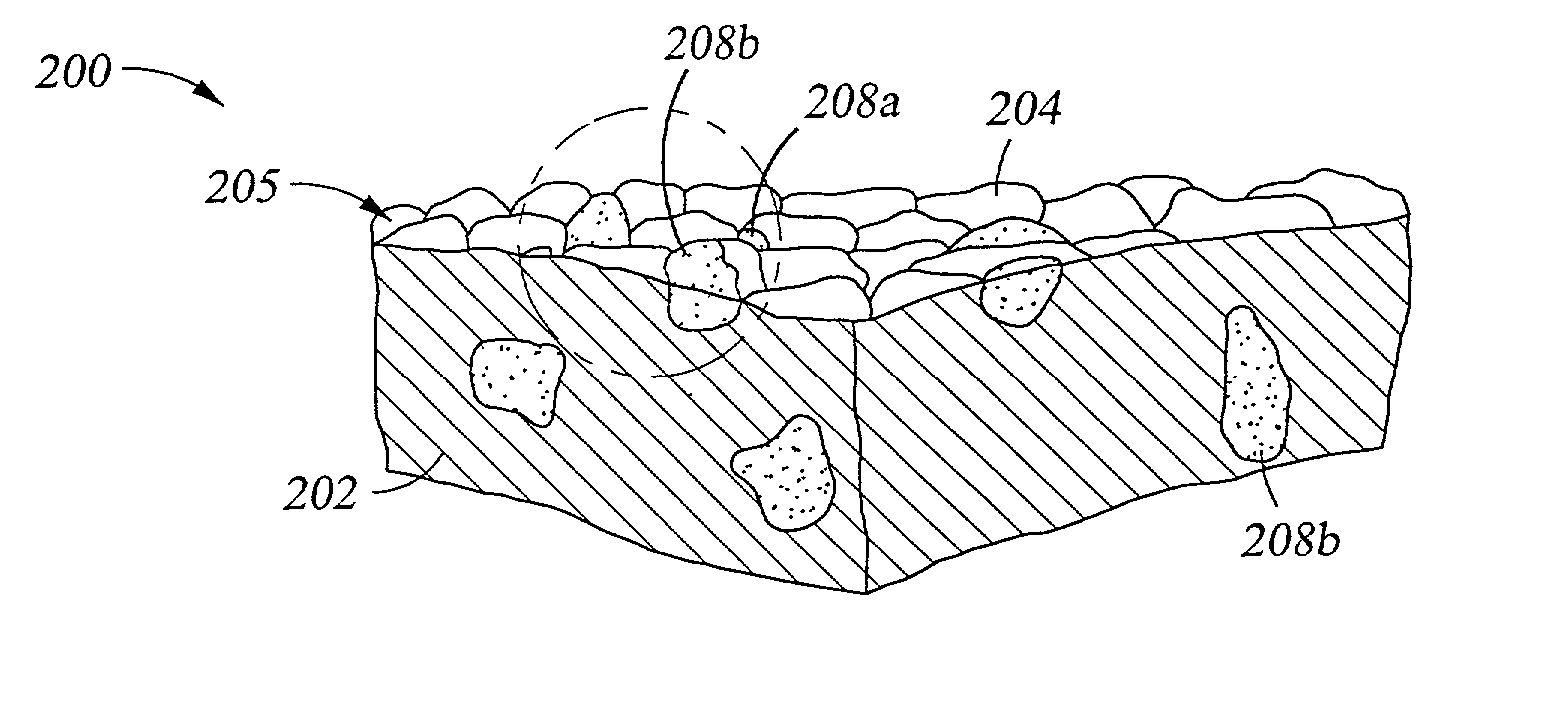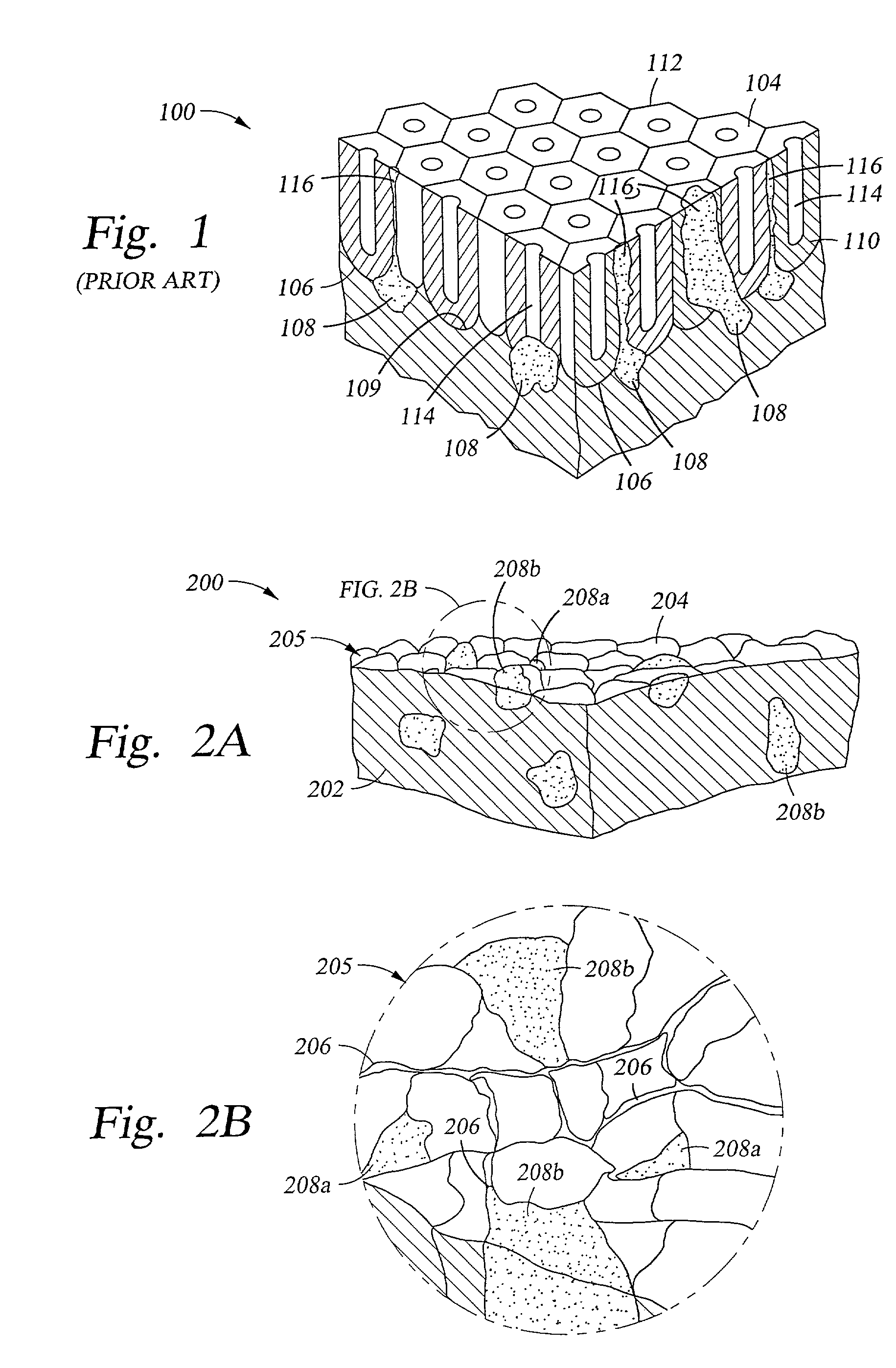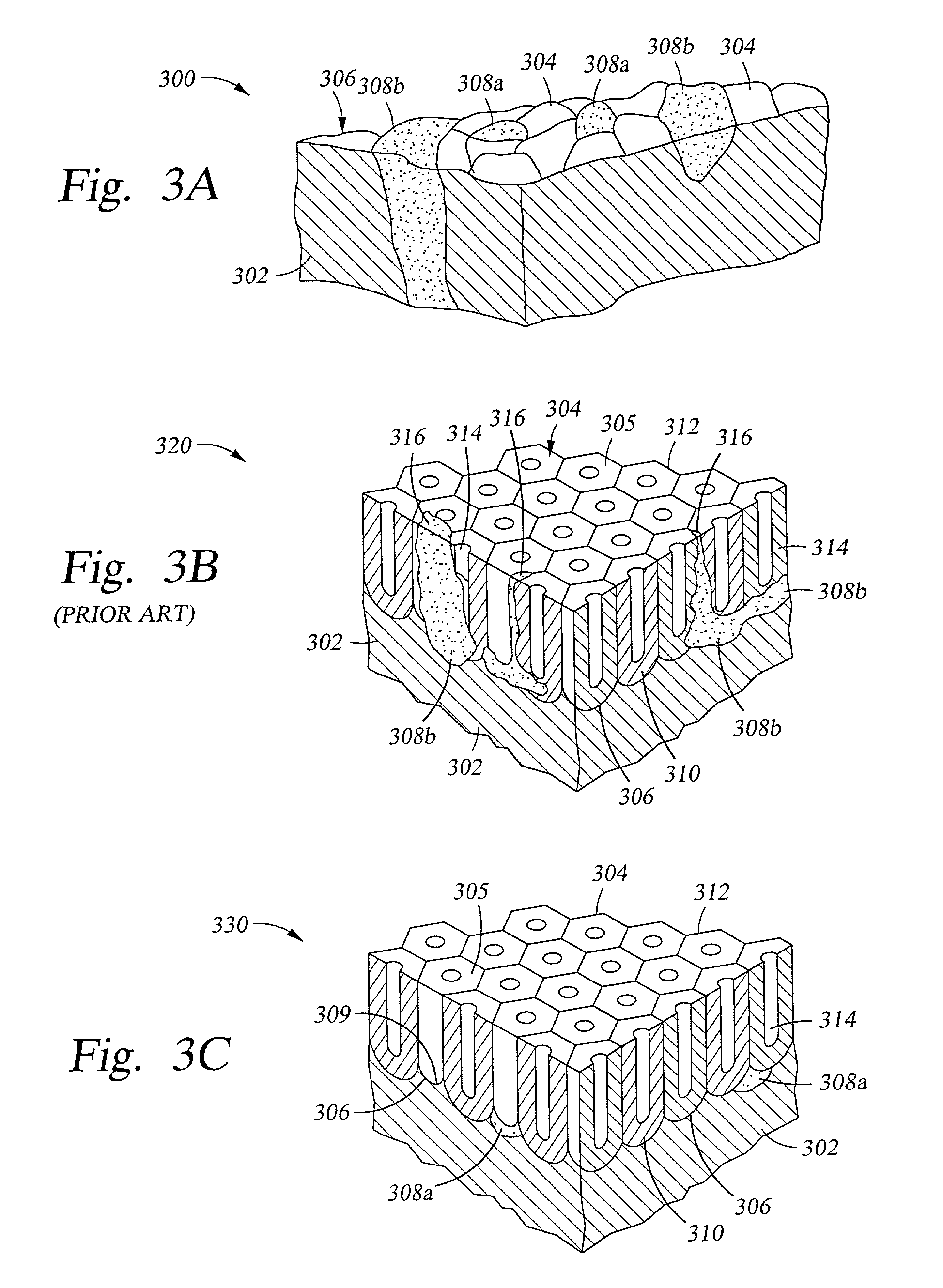Halogen-resistant, anodized aluminum for use in semiconductor processing apparatus
a technology of anodized aluminum and semiconductor processing equipment, which is applied in the direction of electrolytic coatings, surface reaction electrolytic coatings, coatings, etc., can solve the problems of reducing affecting the performance etc., to achieve the effect of improving the performance life of anodized semiconductor equipment, improving abrasion resistance, and generalized density
- Summary
- Abstract
- Description
- Claims
- Application Information
AI Technical Summary
Benefits of technology
Problems solved by technology
Method used
Image
Examples
Embodiment Construction
[0036]As a preface to the detailed description, it should be noted that, as used in this specification and the appended claims, the singular forms “a”, “an”, and “the” include plural referents, unless the context clearly dictates otherwise.
[0037]The objective of the present invention is to provide a semiconductor processing apparatus which is resistant to corrosive processing conditions. In general, the body of the apparatus is formed from an aluminum alloy. To enable the aluminum alloy to resist corrosion, an aluminum oxide protective film is applied over a surface of the aluminum alloy which is to be exposed to the corrosive processing environment. To obtain the best corrosion resistance and the longest acceptable performance lifetime for the apparatus article, the article is fabricated in a particular manner. As described above, for best results, the aluminum alloy used for the body of the article should be formed from a specialized halogen-resistant aluminum alloy of the kind de...
PUM
| Property | Measurement | Unit |
|---|---|---|
| size | aaaaa | aaaaa |
| size | aaaaa | aaaaa |
| size | aaaaa | aaaaa |
Abstract
Description
Claims
Application Information
 Login to View More
Login to View More - R&D
- Intellectual Property
- Life Sciences
- Materials
- Tech Scout
- Unparalleled Data Quality
- Higher Quality Content
- 60% Fewer Hallucinations
Browse by: Latest US Patents, China's latest patents, Technical Efficacy Thesaurus, Application Domain, Technology Topic, Popular Technical Reports.
© 2025 PatSnap. All rights reserved.Legal|Privacy policy|Modern Slavery Act Transparency Statement|Sitemap|About US| Contact US: help@patsnap.com



